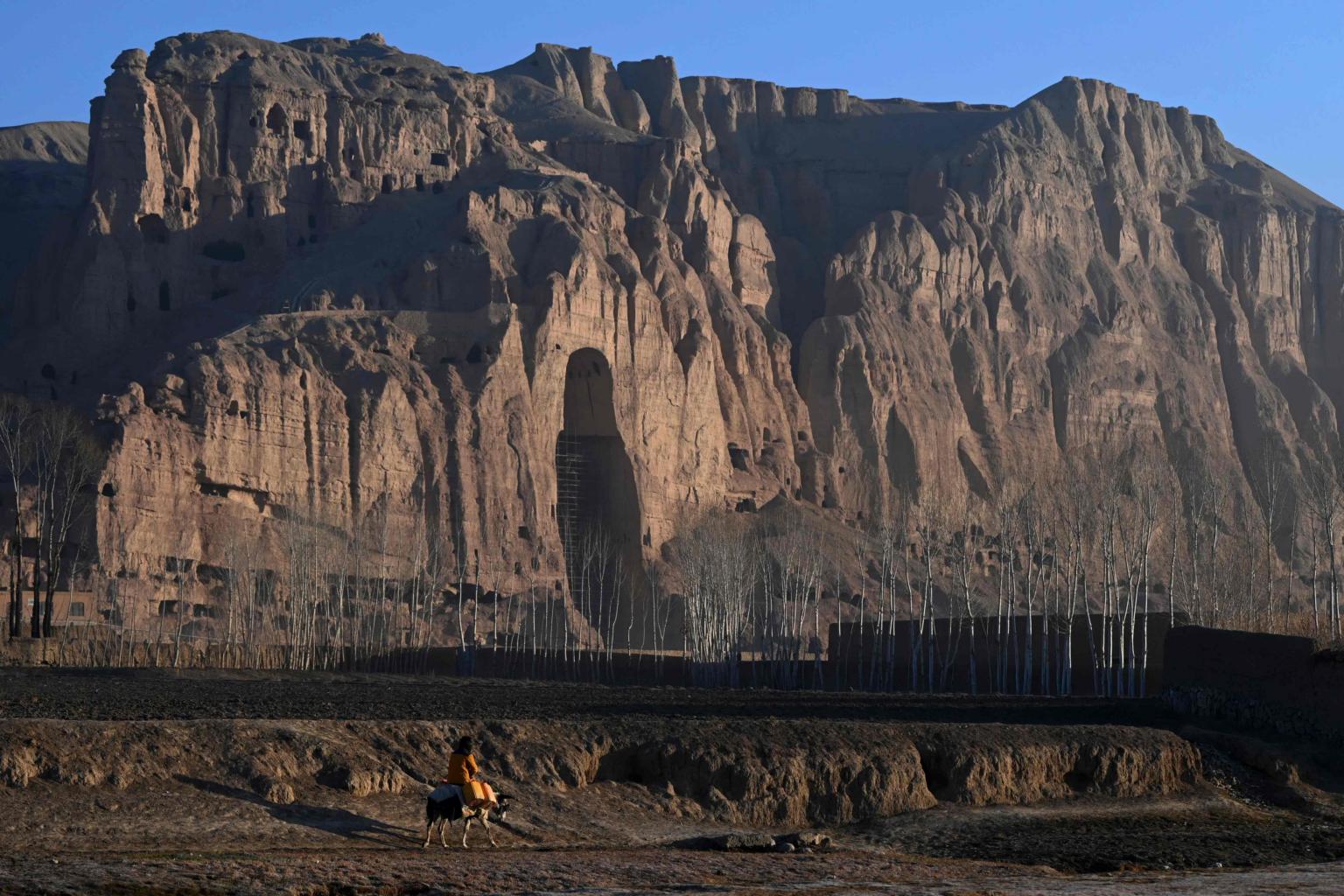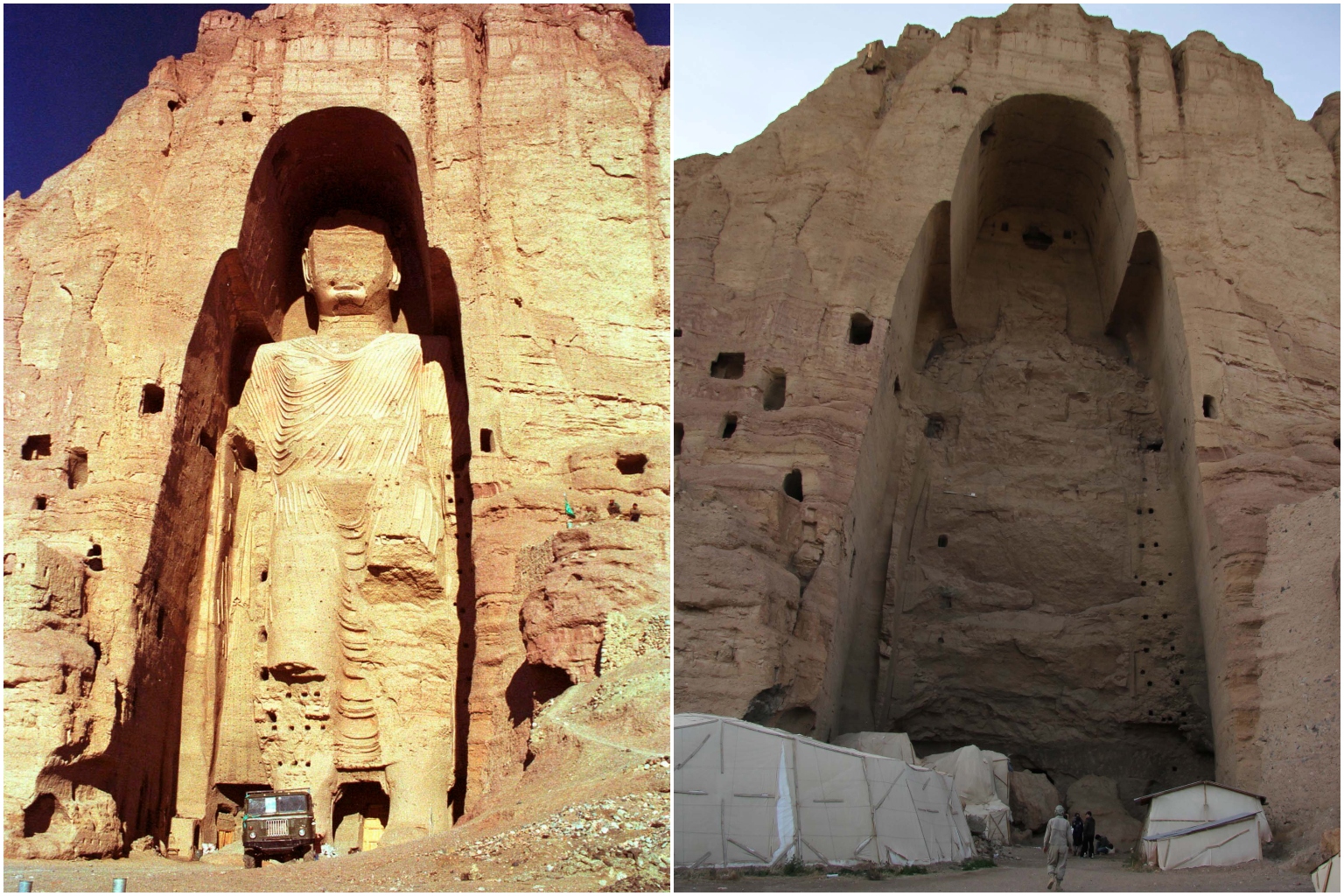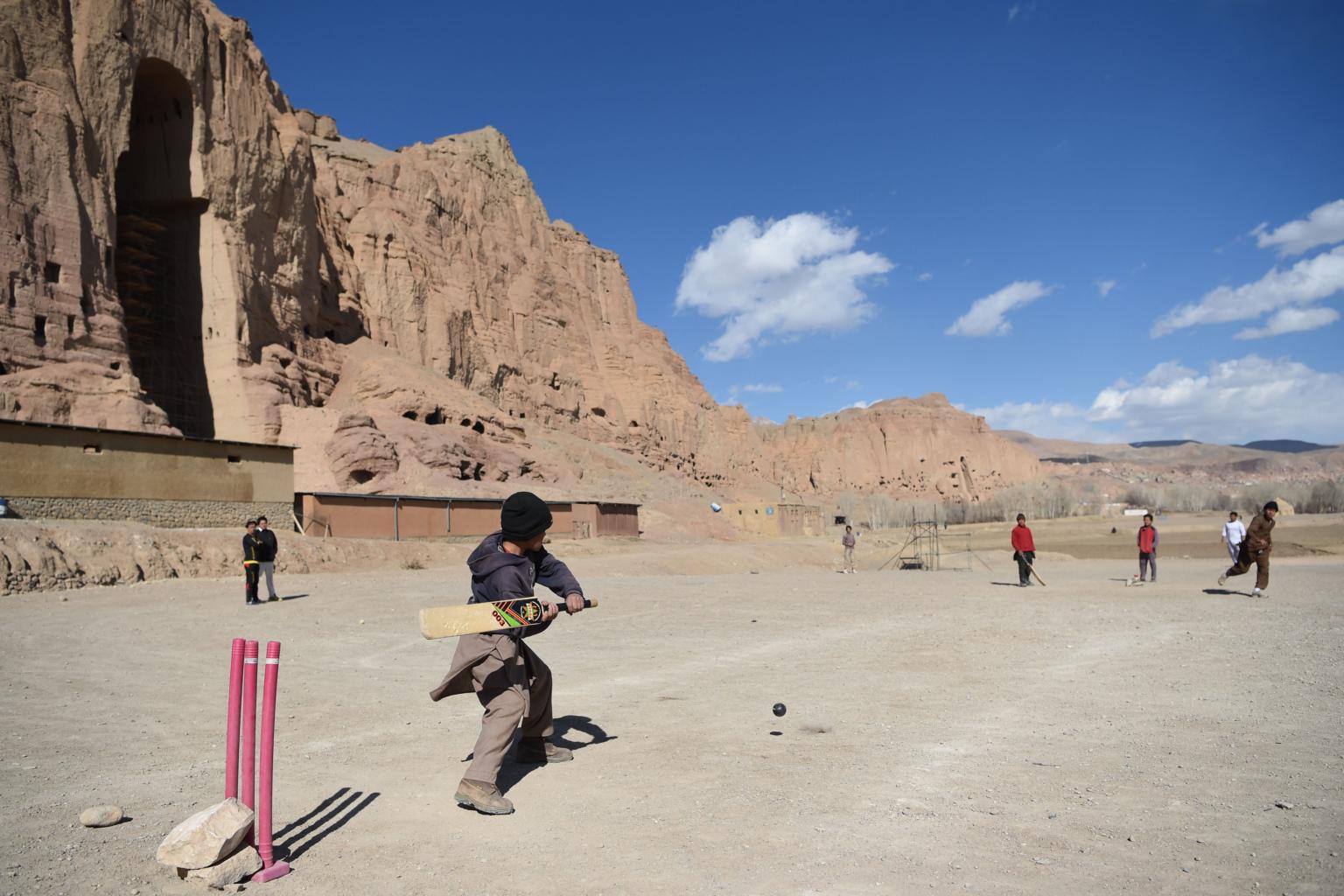Gap in history: Afghans recall Taleban's destruction of famed Buddha statues
Sign up now: Get ST's newsletters delivered to your inbox

The destruction of the Buddhas has been considered one of the greatest archaeological crimes on record.
PHOTO: AFP
Follow topic:
BAMIYAN (AFP) - Afghanistan's giant Buddhas stood watch over the picturesque Bamiyan valley for centuries, surviving Mongol invasions and the harsh environment until the Taleban arrived with an apocalyptic worldview that did not care about one of the great wonders of antiquity.
After years of scorched-earth offensives across Afghanistan, the militants - who saw any representation of the human form as an affront to Islam - turned their attention to the two Buddhas in Bamiyan, peppering the carvings with tank shells and rocket fire before ultimately dynamiting them in March 2001.
To finish the job, the Taleban conscripted locals as porters to lug stacks of explosives to the base of the Buddhas, carved out of the cliff face in the 5th century.
Bamiyan resident Ghulam Sakhi said he is still haunted by the role he was forced to play in the destruction.
"It is not like a memory you could ever forget," he told AFP, saying he was snatched from a market along with dozens of others to help rig the two giant Buddhist statues.
"I was only thinking how to stay alive that day," he said.
The destruction of the Buddhas has been considered one of the greatest archaeological crimes on record and put the Taleban's uncompromising beliefs on the world's radar just months before the Sept 11 attacks that triggered a US-led invasion of the country that ousted the militants.
First mentioned in the writings of a Chinese pilgrim in 400 AD, the statues served as a testament to what was once a great Buddhist civilisation in the heart of the Hindu Kush that straddled the famed Silk Road.
The statues - one 55m high, the other 38m - were believed to have been carved painstakingly by hand over lifetimes into the caramel-coloured sandstone cliffs in Bamiyan, alongside a network of ancient caves, monasteries and shrines, some of them still showing remnants of colourful frescos.
For generations Mr Sakhi and his family took great pride in the archaeological treasures that briefly made the area a magnet for tourists flocking to Afghanistan along the famed "Hippy Trail" in the 1960s and 70s.
"Foreign tourists would come in big numbers to visit the statues and many, including my father, would provide them with food and other items in exchange for money," said Mr Sakhi.
"Work was good. Everyone - shopkeepers, drivers, landowners and others - would benefit from them."

But the arrival of the Taleban in the valley, with their heavy weapons and hardline views, forever shattered the landscape of Bamiyan.
"They were a beautiful view, a source of hope for people," said Mr Hamza Yosufi, a resident who witnessed the destruction.
The massive explosion, caught on camera, sent a shockwave through the lush valley, filling it with dust and smoke.
"It was terrifying... I was extremely heartbroken, everybody was," he said.
'They will destroy everything'
Few places in Afghanistan have benefited as much as Bamiyan since the fall of the Taleban regime.
The largely Shi'ite population has rebuilt schools, welcomed aid, and catered to one of the few international tourism destinations left in the war-torn country thanks to the safety offered by its remote location.
"Had the Buddhas been still standing here, the tourism industry today would have flourished," said Mr Ishaq Mowahed, the director of the culture department in Bamiyan.
But even the empty niches still attract tourists, he insisted.

Bamiyan's revival, however, is being eclipsed by fears the Taleban are on the verge of returning to power after signing a landmark deal with the US that could see foreign troops exit the country in coming months.
Few expect the government's beleaguered security forces to last long against the Taleban's withering onslaught without the protection of US airpower and its special forces.
"If the Taleban come back with the same ideology that led to the destruction of the Buddhas, they will destroy everything left," said Mr Mowahed.
In a statement last month, the Taleban vowed to protect the country's archaeological heritage saying no one had the right to "excavate, transport and sell historic artefacts anywhere, nor to move it outside the country under some other name".
But few in Bamiyan believe them.
"It was a crime that the world cannot and should not forgive or forget," said Mr Anar Gul, a 23-year-old graduate of archaeology studies at Bamiyan University.

